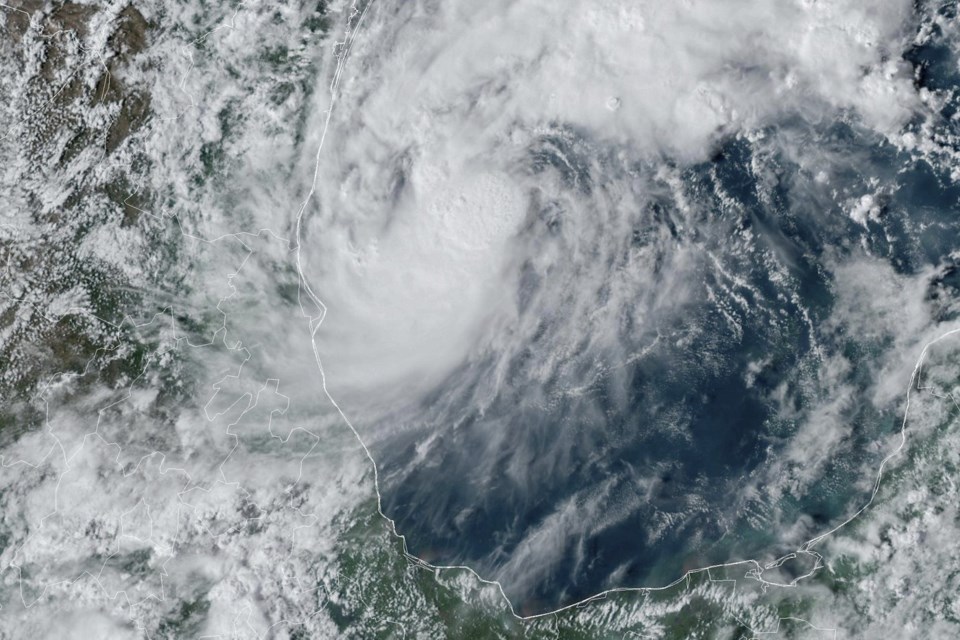MIAMI (AP) — A storm system that was brewing in the Gulf of Mexico strengthened into Tropical Storm Milton on Saturday and forecasters warned it could intensify into a hurricane and slam into the west coast of Florida later this week.
Tropical Storm Milton was about 355 miles (565 kilometers) west-northwest of Progreso, Mexico, and about 845 miles (1,360 kilometers) west-southwest of Tampa, Florida, with maximum sustained winds of 50 mph (80 kph) while heading east at 5 mph (8 kph), the National Hurricane Center in Miami said early Sunday.
“Milton moving slowly but expected to strengthen rapidly,” the center said, noting a “risk of life-threatening impacts increasing for portions of the Florida west coast.”
Florida Gov. Ron DeSantis declared a state of emergency in 35 counties ahead of the storm's potential landfall. Since many of those counties are still recovering from Hurricane Helene, DeSantis asked the Florida Division of Emergency Management and the Florida Department of Transportation to coordinate all available resources and personnel to supplement local communities as they expedite debris removal.
Though no coastal watches or warnings were in effect, the hurricane center said the Florida Peninsula, the Florida Keys, Mexico's Yucatan peninsula and the northwestern Bahamas should monitor the system’s progress.
The storm is forecast to strengthen and bring the risk of life-threatening impacts to parts of Florida, with hurricane and storm-surge watches likely in effect from Sunday. Parts of the state are expected to have heavy rainfall beginning that day, threatening flash, urban, and areal flooding, along with some river flooding.
“There is an increasing risk of life-threatening storm surge and wind impacts for portions of the west coast of the Florida Peninsula beginning late Tuesday or Wednesday. Residents in these areas should ensure they have their hurricane plan in place, follow any advice given by local officials, and check back for updates to the forecast,” the center said.
Meanwhile, Hurricane Kirk remained a Category 4 major hurricane about 1,345 miles (2,165 kilometers) west-southwest of the Azores with maximum sustained winds of 115 mph (185 kph) late Saturday night, the center said.
Large swells from the storm causing “life-threatening surf and rip current conditions” were affecting the Leeward Islands, Bermuda, the Greater Antilles, the Bahamas and the U.S. East Coast. The swells were expected to move north along the U.S. East Coast and Canada's Atlantic Coast on Sunday and to the Azores on Monday, the center said.
Hurricane Leslie was moving northwest over the open Atlantic without posing a threat to land, forecasters said late Saturday.
The storm was located about 855 miles (1,375 kilometers) west of the southernmost Cabo Verde Islands with maximum sustained winds of 80 mph (128 kph). There were no coastal watches or warnings in effect.
The storms churned as rescuers in the U.S. Southeast searched for people unaccounted for after Hurricane Helene struck last week, leaving behind a trail of death and catastrophic damage.
The Associated Press


